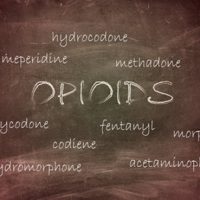Florida Criminalizes Eight Synthetic Opioids

Opioids are not new, and neither is opioid abuse and addiction. Despite this, the opioid drugs most prevalent in the illegal drug supply change frequently, due to the availability and cost of these drugs and to new drugs being synthesized and sold legally or illegally. In the early 2010s, legal but poorly regulated pain clinics distributed prescription opioid pills, such as oxycodone and hydrocodone, virtually indiscriminately. When the pill mills closed down, restricting the supply of opioid pills, heroin became more prevalent in the illegal drug supply, although the illegal sale of oxycodone continued online; one high profile drug trafficking case in South Florida involved a French man who used the screen name OxyMonster to distribute oxycodone online, shipping it to buyers in the Miami area. In 2018, he was arrested when he arrived at Miami International Airport en route to the World Beard and Moustache Championships. Those were the old days before fentanyl, an opioid so strong that a few grains of its powder can kill, entered the illegal drug supply, but now there are some other drugs out there that are even scarier than fentanyl. Here, our Miami drug crimes defense lawyer explains the new rule that criminalizes the possession and sale of eight synthetic opioids which Florida laws had not previously addressed.
The Trouble With Schedule I Controlled Substances
The federal Controlled Substances Act categorizes potentially dangerous drugs among five lists, known as schedules. Many states have their own controlled substance laws that include addition drugs on the various schedules. Schedule I controlled substances are drugs with a very high potential for abuse and with no legally accepted medical applications. The drugs on the other four schedules have at least some accepted medical uses, although they also have abuse potential. In other words, the chemical composition of the drug is not what determines its legal classification; in other words, there is not one schedule for opioids, one schedule for amphetamines, one schedule for hallucinogens, and so on. The schedule of a drug is also not based on its potency, which is the quantity of a drug required to produce a certain effect or to be lethal. The drugs on Schedule I are there purely because lawmakers consider them more illegal than other controlled substances. Heroin is a Schedule I controlled substance, but so are psilocybin and cannabis, which a growing number of researchers physicians support for medical use. By contrast, fentanyl, which causes more overdose deaths than any other drug, is Schedule II.
The Trouble With Nitazenes
The term “opioid” refers to drugs derived from the opium poppy; these drugs have been used as painkillers since ancient times. Drugs that don’t occur in nature but have a similar chemical structure and similar effects to opium-derived drugs are called synthetic opioids. Some synthetic opioids are much stronger than morphine, and some of these, including fentanyl, are widely used in medicine. One group of synthetic opioids is called benzimidazole opioids, also called nitazenes. The oldest of these drugs was first synthesized in the 1950s in the context of research in pursuit of painkillers stronger than morphine. Many different nitazenes have been synthesized, but none of them have been approved for medical use, because the risk of respiratory depression associated with them is dangerously high. Approximately two thirds of overdose deaths in the United States in the past few years have involved synthetic opioids, including but not limited to fentanyl.
What the New Law Says About Nitazenes
This year, Florida enacted a new law categorizing eight previously uncategorized nitazenes as Schedule I controlled substances. Possession of these substances is a felony, and if you get convicted of possessing them, you could face a prison sentence of up to five years. If you get caught selling one of the newly criminalized nitazenes, the maximum sentence is 15 years, and a conviction for trafficking them carries a sentence of up to 30 years in prison. The nitazenes covered under the new law are N-pyrrolidino etonitazene, etodesnitazene, isotonitazene, protonitazene, metonitazene, butonitazene, metodesnitzaene, and flunitazene. The least potent of these drugs is about equal in potency to morphine, but the strongest of them, N-pyrrolidino etonitazene, is ten times as strong as fentanyl, which means that it is about 1,000 times as strong as morphine.
Contact Our Criminal Defense Attorneys
A South Florida criminal defense lawyer can help you if you are facing criminal charges for newly criminalized drugs or for drugs that fall into a legal gray area. Contact Ratzan & Faccidomo in Miami, Florida for a free, confidential consultation about your case.
Sources:
wctv.tv/2023/06/14/florida-bans-synthetic-opioids/
thecentersquare.com/florida/article_96ebf89e-c5b4-11ec-90d5-a7d6f97920d5.html
wuwf.org/florida-news/2022-04-27/florida-attorney-general-bans-eight-synthetic-drugs
